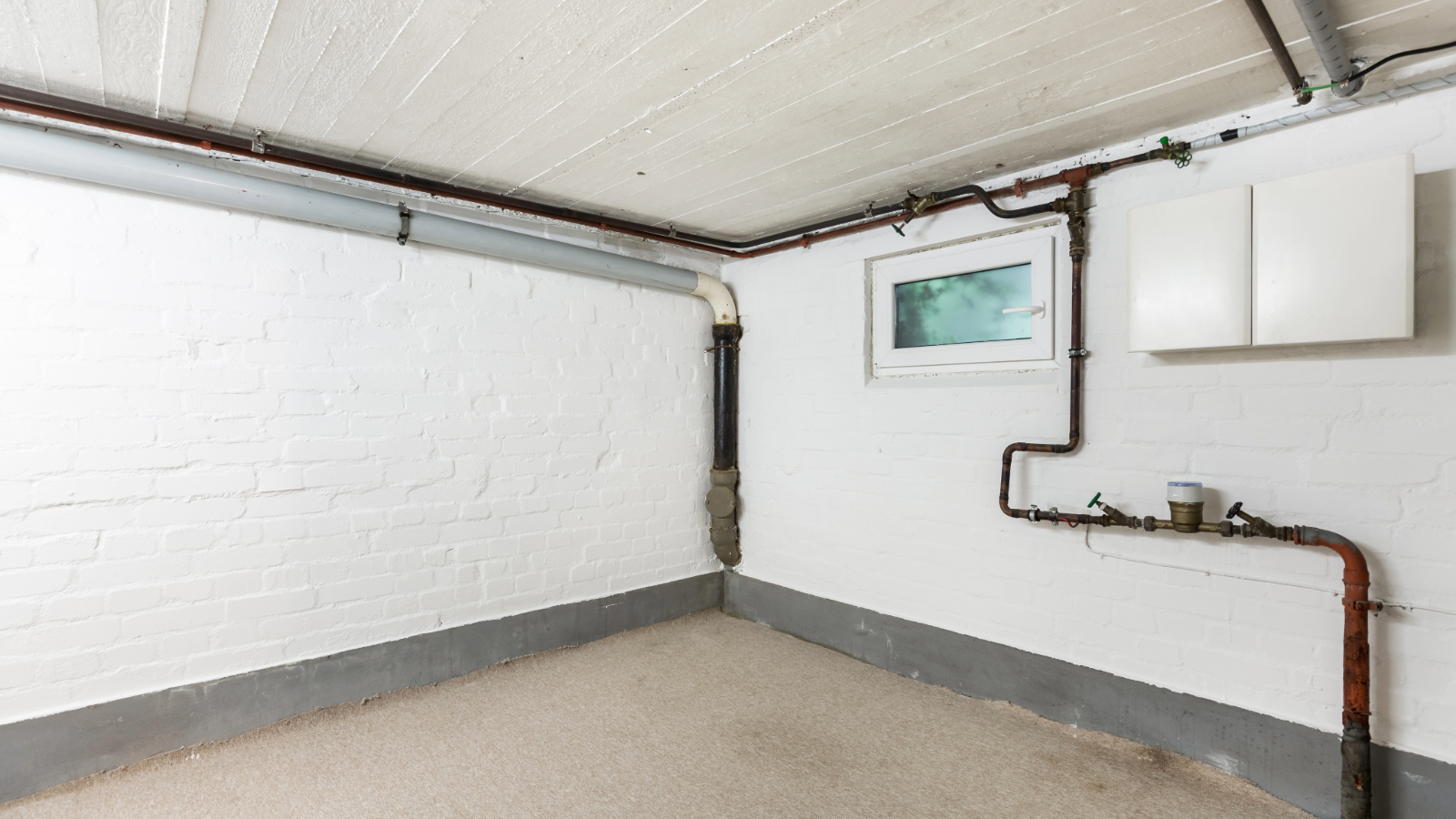Carpet installation costs — what contributes to the final figure?
Carpet installation costs will vary depending on the type of carpet, the room you're laying it in and the underlay and subfloor condition. Here, experts reveal what's involved and why costs vary
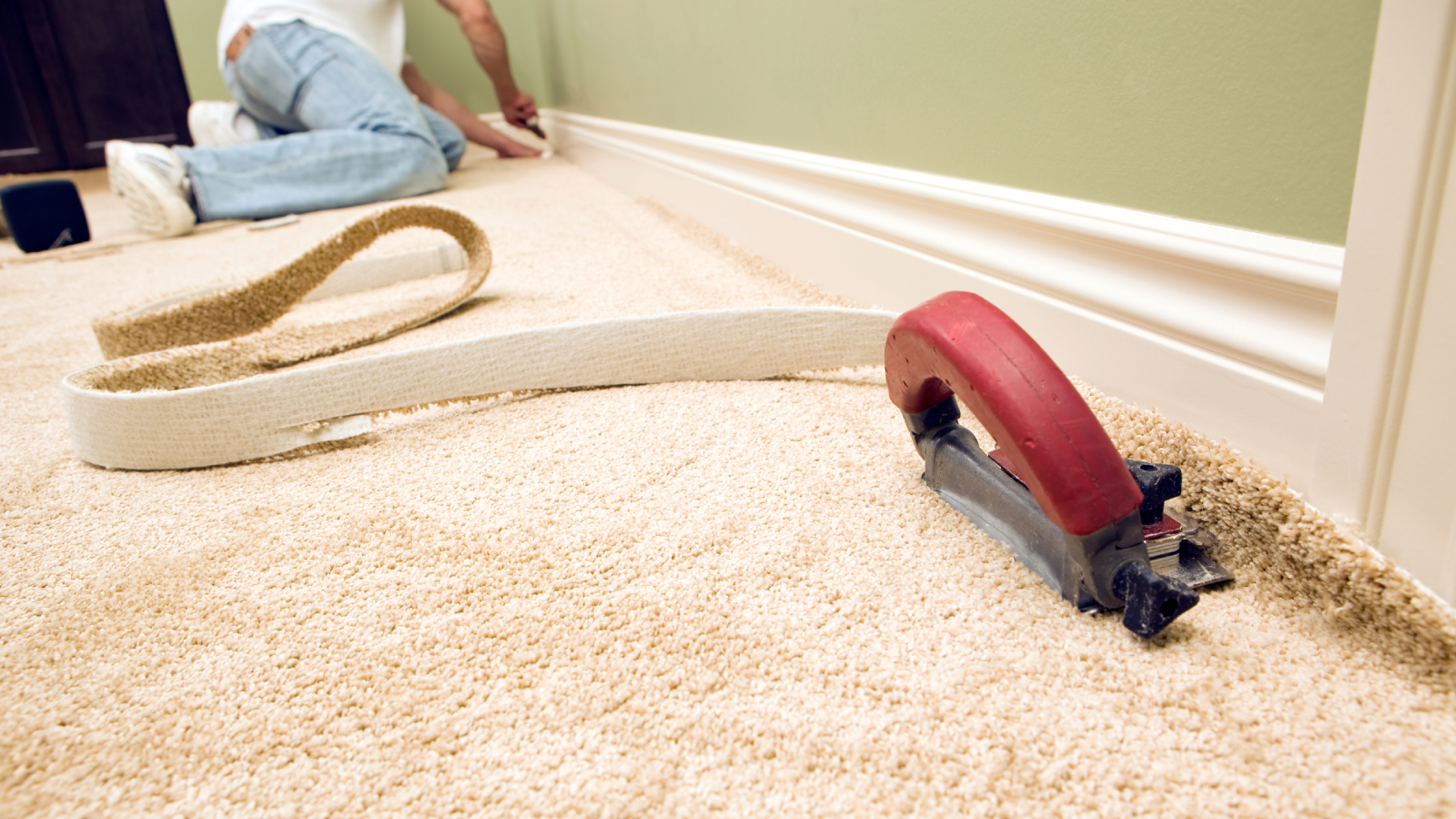
If you're considering a new carpet, the chances are you've already done some research into the different types of carpet. If so, you'll already understand that not all carpet is made equally, and this means the price tag for some carpets is more than others.
As is the case with many of the products you purchase when home building or renovating, the price you see on the display doesn't always include fitting. So, as well as budgeting for the carpet cost per m2 – which can vary widely for different types of carpet – you'll also need to add on carpet installation costs.
But what exactly is included with carpet fitting costs and how much extra do you need to set aside? To help you plan your budget, here's what the experts have to say.
Carpet installation costs — how much does it cost to fit a carpet?
"Most carpet fitters charge around £150-£200+ per day and the price you end up paying will obviously depend on how large the area you are having carpeted is," says renovation expert Natasha Brinsmead. "For a single, standard-shaped room, a new carpet could take just an hour or two to lay, while a whole house may well take up to two days."
Carpet fitters may, however, provide a quote based on a per m2 or room basis, rather than a day rate.
However, there are many elements which influence carpet installation costs – from the complexity of the installation to the cost of the underlay – as we explain in detail below.
What affects your carpet installation costs?
Although visiting a carpet showroom or looking online will immediately give you carpet costs for a huge variety of carpet types and finishes, what it doesn't take into account is the extras that will need to be included.
Bring your dream home to life with expert advice, how to guides and design inspiration. Sign up for our newsletter and get two free tickets to a Homebuilding & Renovating Show near you.
“When calculating carpet installation costs, several elements come into play, including the type and quality of the carpet, which can vary significantly in price," says Johanna Constantinou, Tapi’s interior trends expert and keen floorologist.
“Additionally, costs are influenced by underlay material, labour rates, and any necessary preparation work for the subfloor, all of which contribute to the overall expense of the project," she explains.
"Of course, every and project is unique to its own set of installation house factors, and while you can use tools such as the Tapi carpet calculator to find an estimate of the carpet product costs, installation will be dependent on all of the aforementioned factors."
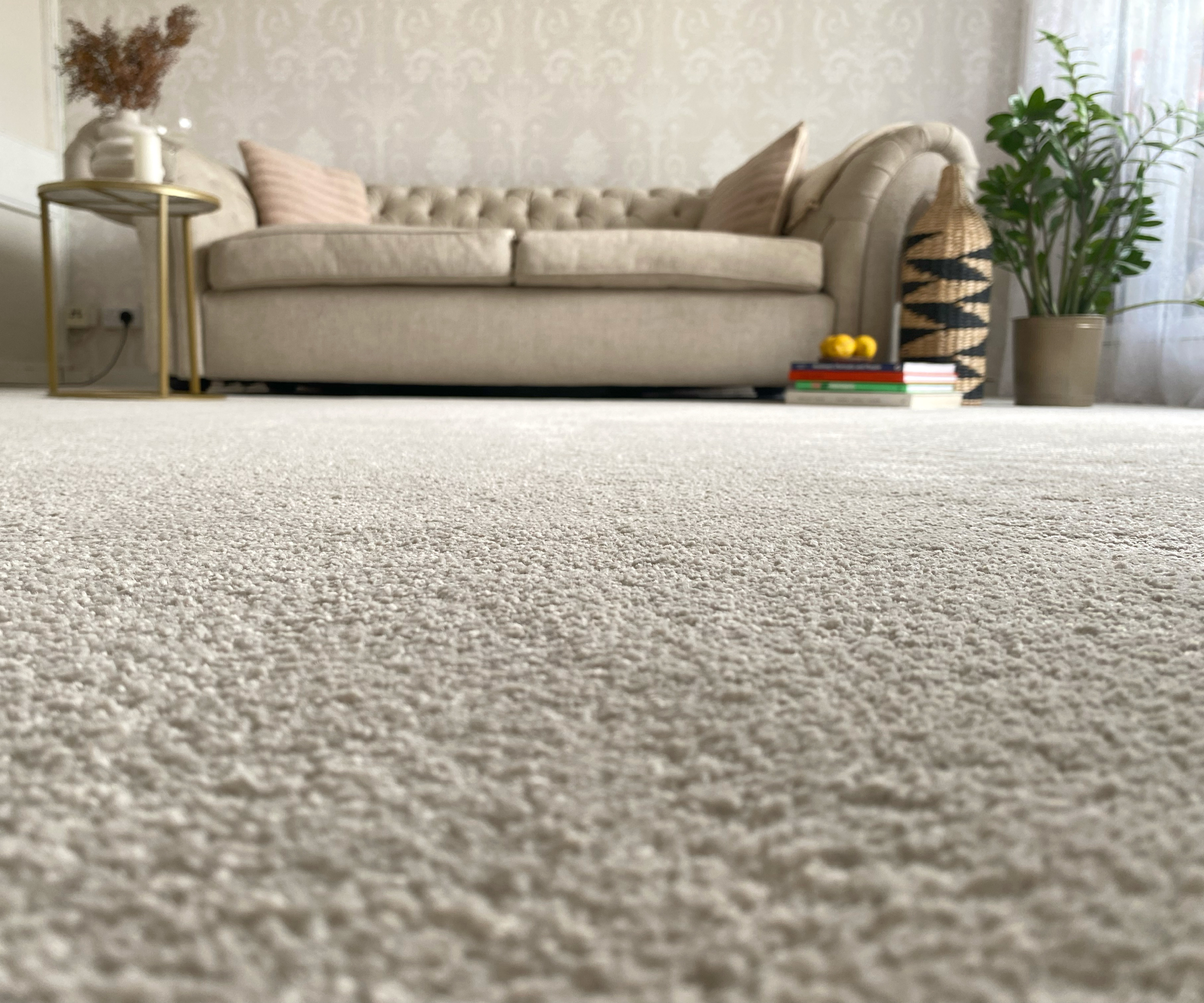

Johanna is passionate about sharing unique tips, insights, and helpful key information on all things flooring. From the technical to the trends, she has been in the industry for over 10 years, amassing a vast amount of knowledge to share with consumers.
Carpet installation costs
Types of carpets and how this affects your carpet installation costs
Whether you're seeking the best carpet for living rooms or the best carpet for pets, you'll have come across a variety of carpet costs that start low, and in some cases, end at eye-wateringly expensive.
Johanna Constantinou explains why there's such a difference when it comes to different carpet types such as wool vs polypropylene.
“Carpets made from high-end materials like wool, tend to be more expensive because they often require more intricate manufacturing, installation techniques and specialised skills. Choosing carpets with intricate patterns or custom designs, as well as those with high-density constructions or advanced features like stain resistant carpets, can also drive up the cost," she explains.
“The least expensive type of carpet is typically made from polypropylene (olefin), a synthetic fibre that is budget-friendly due to its lower production costs. The material is known for being stain and moisture-resistant, though it may not be as durable as other materials like nylon," she adds.
"Another affordable option is loop pile (berber) carpet, especially when made from synthetic fibres, offering reasonable durability at a lower price point.”
The good news is that although the product price can be vastly different, as can indeed the underlay, the fitting costs won't be as inflated if you opt for a more expensive carpet.
"At Tapi, costs for carpets range from £6.99 to £109.99, underlay starts at £7.99 per square metre and in the UK, you are likely to find a carpet installer at the rate of £25 - £35 per hour,” says Johanna.
Some types may take longer to install
However, there may be different ways in which the carpets need to be fitted that could impact on the time it takes for carpet to be laid, and therefore increase your material and labour costs says Kirsty Barton, brand storyteller at Alternative Flooring.
“Certain floor coverings, like natural flooring made with plant fibres, are best installed using a 'double stick' method for long-lasting results. This process involves first adhering a suitable underlay to the subfloor before glueing the floor covering on top of the underlay, with a suitable gripper that’s also used around the room's perimeter," she explains.
"This method is crucial as plant fibre floor coverings can shift or shrink if not secured properly. The double-stick approach prevents these issues, ensuring a flawless fit."
In certain instances, you may also need to let the carpet breathe in the room before your installers arrive.
"Natural fibres also need to acclimatise to the room’s environment for at least 48 hours before installation," advises Kirsty. "They should be unwrapped and loosely rolled in the space to further adjust to the temperature. While this method requires more time, additional materials and preparation than a conventional carpet fitting, the investment results in a durable, beautifully installed floor covering that will stand the test of time.”

Kirsty has been working at Alternative Flooring for over 20 years. She has been instrumental in shaping Alternative Flooring's brand identity and is committed to the company's core pillars: people, product, and planet.
Other factors influencing installation costs
“Each carpet and flooring project is unique and there may be elements to your instalment that increase or decrease costs, like the shape of the project room for example," says Johanna. “Carpet thickness and labour costs in your area will also have an impact on the final bill."
"Beyond labour and the type of carpet, additional factors like the best underlay for carpet, grippers, and subfloor preparation all play a vital role," adds Kirsty Barton. "It's easy to overlook essentials such as adhesives (depending on the installation method) and door bars or thresholds, which can vary in price.
"Your fitter will guide you through these details and may recommend options that add to the initial cost," she says, "but will ultimately ensure your carpet looks and performs its best.”
In addition, it's worth checking if your quote also includes the delivery of the carpet, and the removal and disposal of the old carpet. Taking up and disposing of the latter yourself on a DIY basis, is one way to save on costs.
"Another associated cost, particularly if you're swapping a different type of floor covering, such as vinyl, for carpet, or you are specifying a thicker underlay – which is often the case when renovating – is the cost of trimming the door to accommodate the higher floor level," says Claire Lloyd, Homebuilding & Renovating's business development editor.
"This a task is well within the capabilities of a competent DIYer, but a carpenter may charge in the region of £40-£50."
Before you get a carpet installation cost, it's also worth asking yourself the following questions in order to identify additional areas that may increase or hopefully decrease the final amount you have to pay:
- Which rooms do I want carpeted? Having to carry the carpet upstairs, fit it to awkward shapes or encountering problems accessing the house e.g no parking, may all influence the final fee
- What is the condition of the floor? Is it an older floor with old glue or carpet gripper still in place for example? This could require more preparation and extra costs
- Have I picked a patterned carpet and does this need to be matched between rooms and doorways?
- Is the room I want carpeted empty? Having to move, or work around furniture can make it a longer and therefore more expensive job
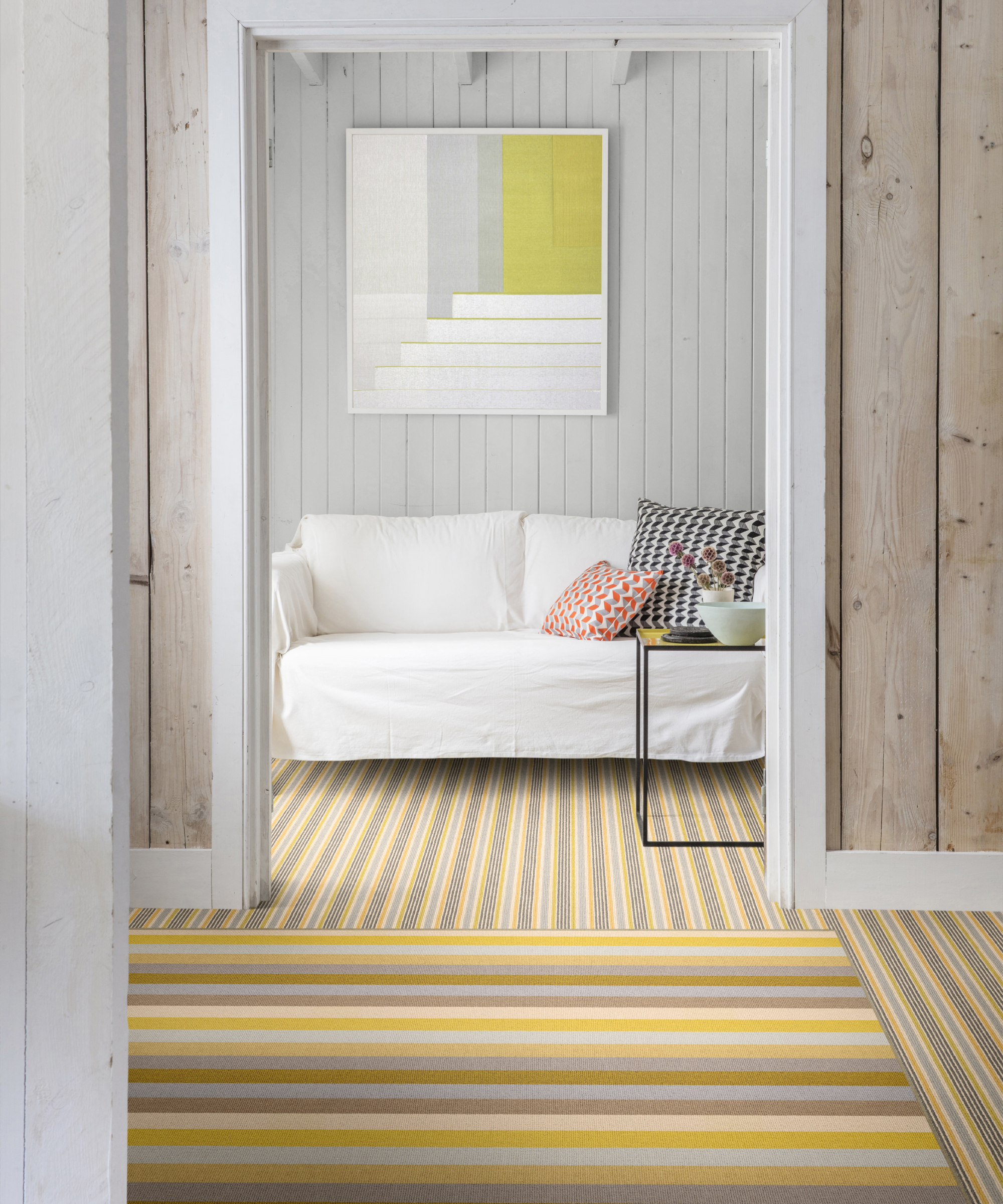
Stair carpet fitting costs
If you're considering stair carpet ideas, be aware that, "installing carpet on stairs is a more intricate process compared to laying it on flat floors," explains Johanna Constantinou. "The stairs require careful measurements, precise cutting, and secure attachment to fit the contours and tricky angles of the staircase.
“This accuracy demands more time and expertise from the installer, meaning that it will cost a little bit more. Additionally, stairs often necessitate extra materials, such as stair nosings or edging, to create a neat and finished appearance,” she adds.
It's also worth bearing in mind, the more intricate the stairs, the more your costs will increase says Kirsty Barton.
“Turns and winders require thoughtful planning and expertise, particularly if your chosen carpet has a pattern or stripes. Precision is key to ensuring the carpet fits snugly around each step, avoiding looseness or bagging," explains Kirsty. "Achieving this level of detail takes extra care, time and attention compared to a flat surface area, or even a straight staircase, so you can expect to pay a slightly higher cost for the installation."
To make sure you have an idea of how much carpet you will need in order to add on underlay, follow our guide on how to measure carpet for stairs.
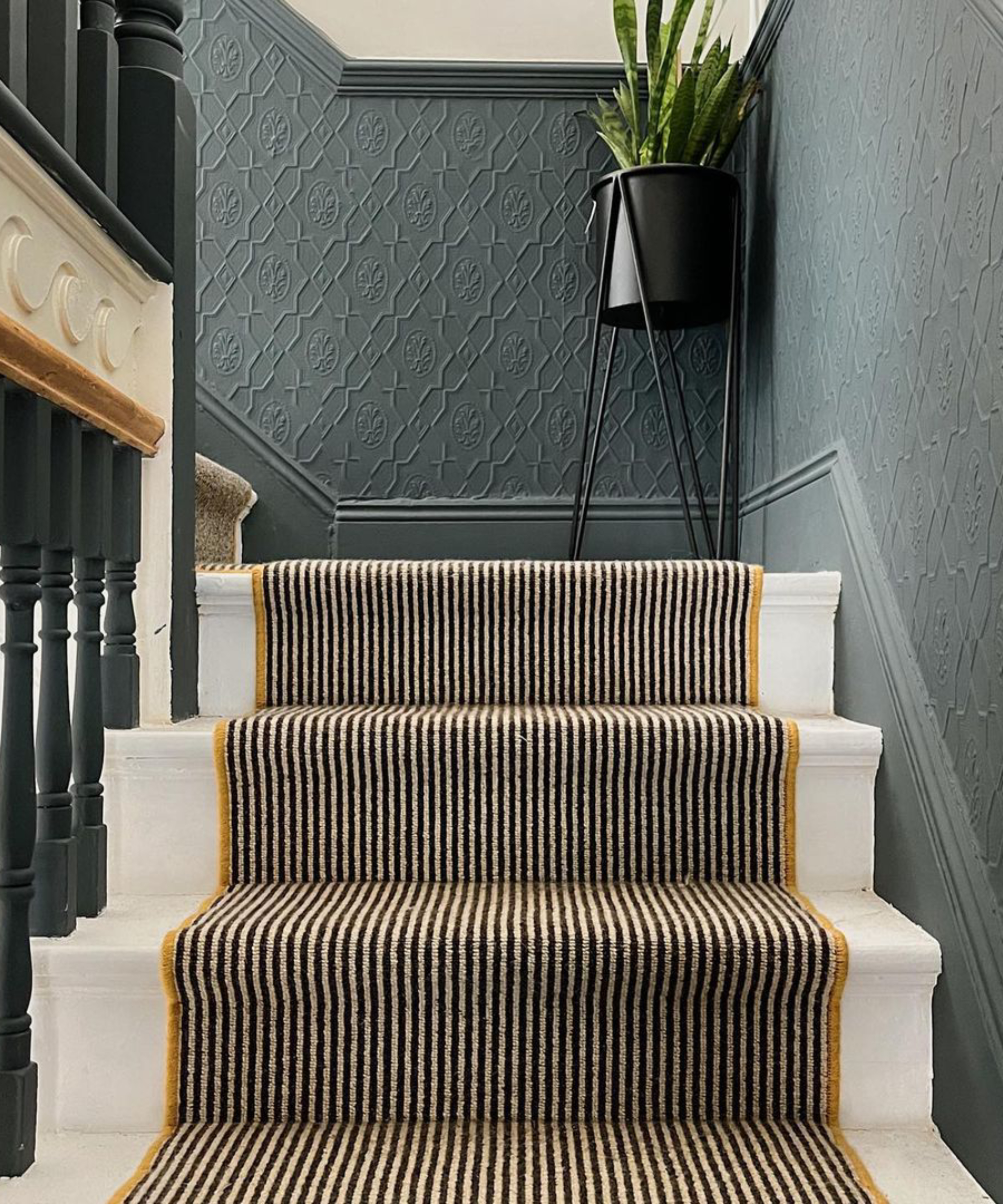
How to prepare for carpeting fitting
For a smooth and speedy job, it's worth investing some time in making sure your room is as ready as it can be before the carpet fitters arrive. This is easier to achieve when you are undertaking a self build project, but potentially more tricky if you are renovating or upgrading an existing room.
Nonetheless, there are several key steps you can take to take to make the process easier.
“To ensure your floor is ready for a beautiful carpet to be fitted, it’s important to make sure that the subfloor is dry, level, sound and dust-free and prepared to British Standards," says Kirsty Barton.
"Your carpet fitter should go through this with you and offer help and guidance if needed. It’s also important that before installation, there are no sources of excessive moisture in the area where the floor covering is going to be laid, such as damp walls, as this could damage your carpets overtime if fitted in unsuitable conditions.”
In order to help keep carpet installation costs down, Johanna also recommends the following.
“To prepare your floor for carpet installation, ensure the room is clear of furniture and clean it thoroughly. It’s also important to communicate any concerns you may have with the installer when you book them in for the job, so that they can prepare accordingly," she says.
“You can of course ask them if there is anything you need to do before they visit," says Johanna, "but ultimately, on the day, it is their job to carry out the installation, so don’t attempt any handy work yourself.”
My personal top tip? It's the same one I suggest for any tradesman you have hired to work in your home. Never underestimate how far the offer of a cup of tea and a biscuit goes in generating a good working relationship. Just make sure they don't spill it on your new carpet!
FAQs
When should I arrange for my carpet to be fitted?
“For the best results, install your carpet last when decorating a room," says Johanna Constantinou. "This helps avoid damage from paint or other decor, makes cleaning up easier, and ensures accurate measurements for the carpet.”
"The key is to choose what’s best for your home, while considering a few important factors," says Kirsty Barton. "Installing carpets first can minimise the risk of scratches or dust that might occur when fitting the carpet, with no need for touch ups. On the other hand, painting first protects your new carpet from any accidental paint spills, even with the dust sheets in place.
"Every professional has their preferred approach," she adds, "so it’s wise to ask for their input when planning your next steps.”
If you do have the misfortune of a painting accident post carpet fitting, find out how to get gloss paint out of carpet.
I'm on a budget — should I invest in good carpet or better underlay?
“Both carpet and underlay are crucial components of a successful flooring installation," says Johanna Constantinou. "However, if you're on a budget, investing more in the carpet is generally a better strategy.
“A higher-quality carpet will likely last longer, look better over time, and provide better insulation and comfort. It's a long-term investment that can save you money in the future," she adds.
However, it could also be worth considering a slight compromise so that the quality of your underlay matches the quality of your carpet.
"Installing an expensive carpet without the right underlay can lead to a lack of softness and durability," warns Kirsty Barton, "negatively affecting the overall experience. A quality underlay will not only add comfort and bounce but will also significantly improve how your carpet looks and performs overtime, making it an essential part of the investment.”
Can I lay carpet myself?
If you have a reasonable level of DIY skill and you're working on a new home where the floors are even and smooth, you could fit a new carpet yourself. Arm yourself with the right knowledge courtesy of our how to lay carpet guide and start by tackling a simply shaped room to practise your new skills without too much risk.
Bear in mind you may also need to invest in a couple of tools, including a carpet stretcher. Although carpet fitting kits, like this VonHaus carpet fitting set from Amazon, can be picked up relatively cheaply.
Of course, choosing the right flooring for your home doesn't just involve considering carpet. There are a wide range of options available to you and what you choose will depend on your budget, lifestyle and personal style preferences.
For more ideas, find out what is Karndean flooring to see if luxury vinyl tiles may be a more suitable option in a busy family home. Or perhaps you might want to consider stair runner ideas rather than a fully carpeted staircase. Runners can be a good solution if you've recently renovated a wooden staircase but want to add an additional layer to dampen the noise and improve the feel underfoot.

Sarah is Homebuilding & Renovating’s Assistant Editor and joined the team in 2024. An established homes and interiors writer, Sarah has renovated and extended a number of properties, including a listing building and renovation project that featured on Grand Designs. Although she said she would never buy a listed property again, she has recently purchased a Grade II listed apartment. As it had already been professionally renovated, she has instead set her sights on tackling some changes to improve the building’s energy efficiency, as well as adding some personal touches to the interior.
